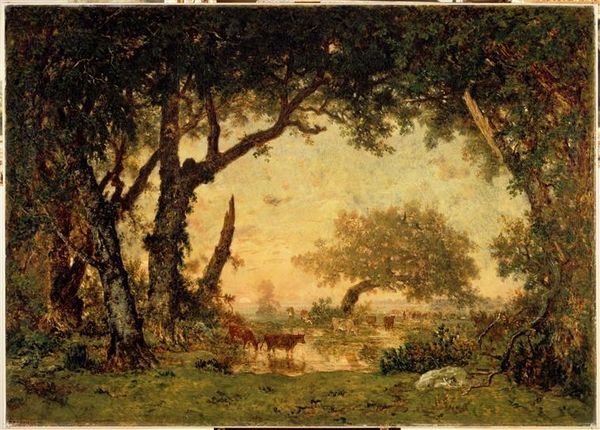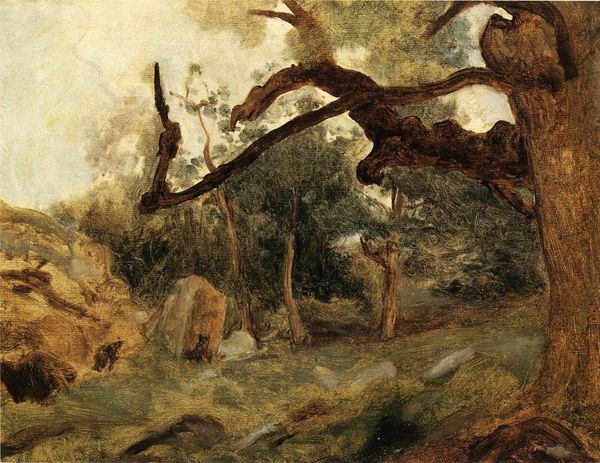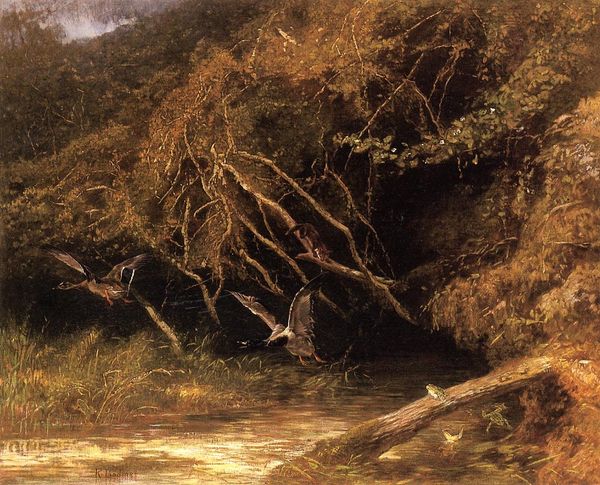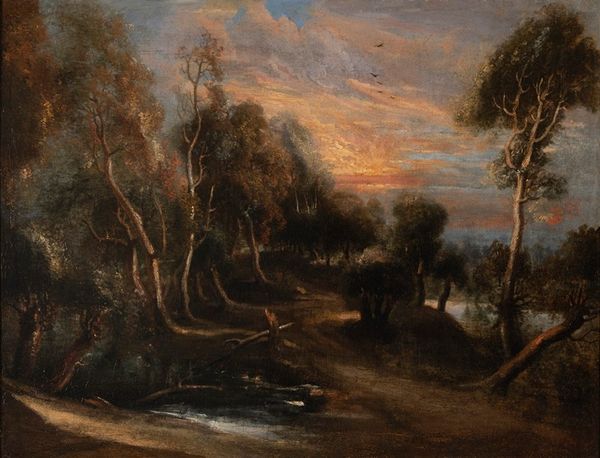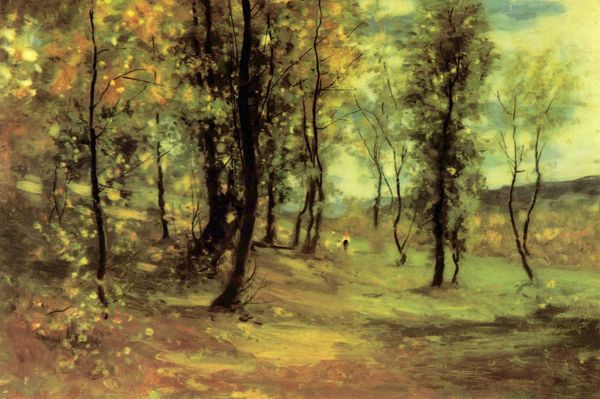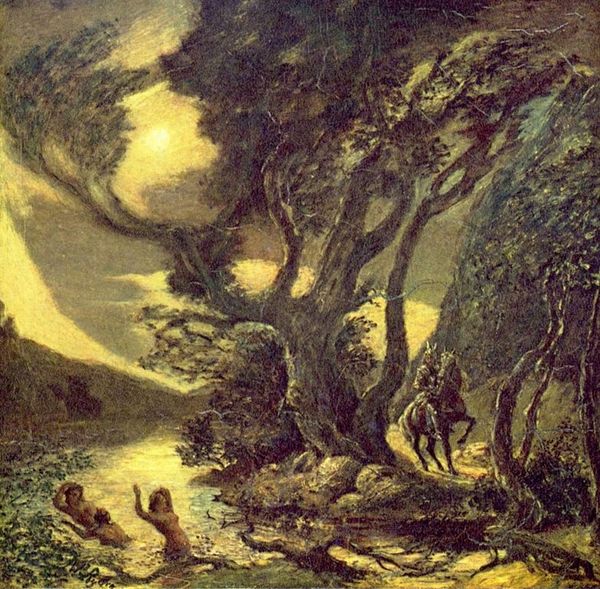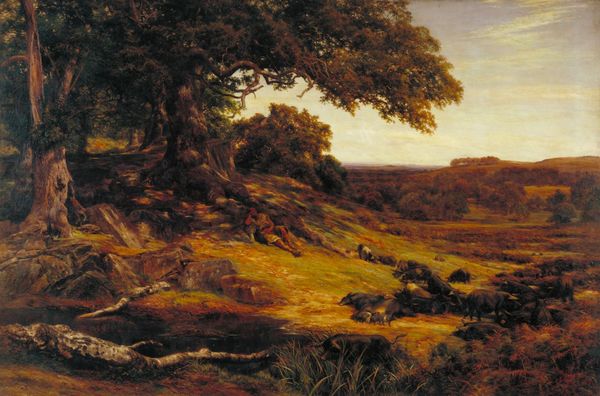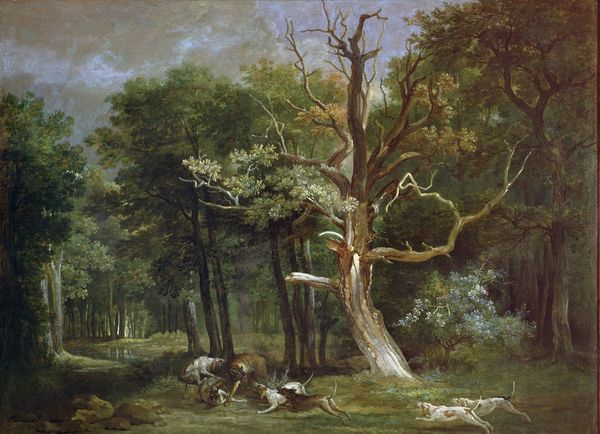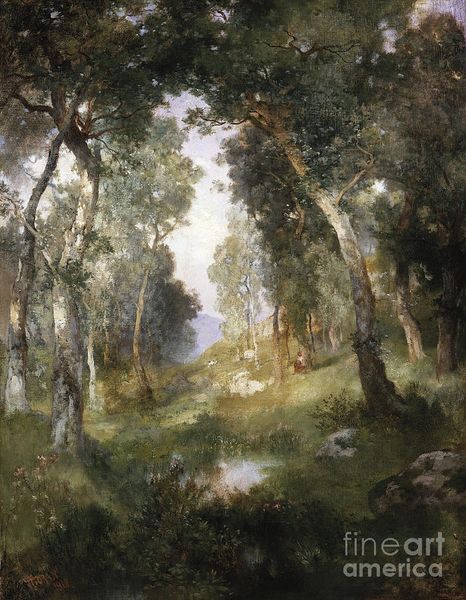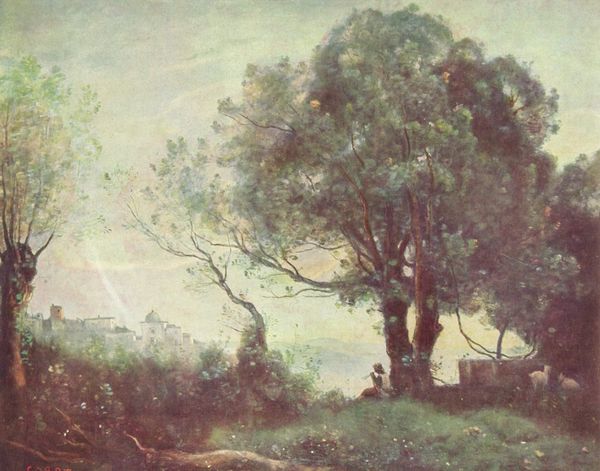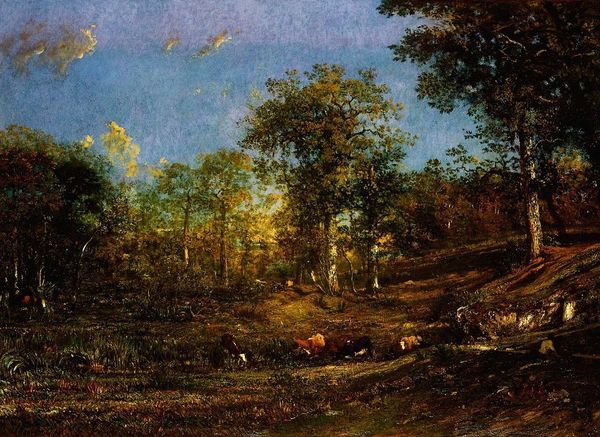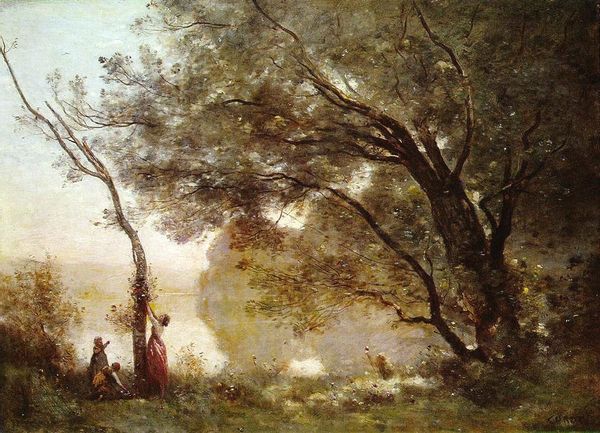
painting, plein-air, oil-paint
#
tree
#
painting
#
plein-air
#
oil-paint
#
landscape
#
impressionist landscape
#
nature
#
forest
#
romanticism
#
realism
Dimensions: 142 x 198 cm
Copyright: Public domain
Curator: It's quite somber, wouldn't you agree? The muted tones and almost oppressive density of the trees… there's a certain weight to it. Editor: Yes, a real seriousness pervades the piece. What are we looking at precisely? Curator: This is "Edge of the Forest at Fontainebleau, Setting Sun," created around 1850 by Theodore Rousseau. Rousseau was a leading figure in the Barbizon School, known for their dedication to painting en plein air—that is, outdoors, directly from nature. Editor: The landscape genre in that era had very particular connotations. Looking at Rousseau's painting through a postcolonial lens, for example, the "untamed" forest becomes a loaded symbol. Who has access to this "nature?" Who benefits from its resources? Is the very notion of wilderness a construct imposed upon existing communities? Curator: It is oil on canvas. His engagement with the natural world definitely spoke to a broader yearning for authenticity and a retreat from industrialization. Think of the revolutions of 1848; Rousseau and his contemporaries found themselves questioning dominant power structures and seeking solace, perhaps, in a vision of the rural idyll. Editor: And the figures of the animals at the front... what role do they play within that wider reading? Are they simply pastoral markers, confirming nature as harmonious and unspoiled? Or do they gesture to a tension between human intervention and untouched wilderness? Curator: It’s interesting you point that out because Rousseau was refused repeatedly by the Salon. He took great pains to render those very cows that populate his work as something other than anodyne elements. His commitment was to show modern agriculture’s role in the creation of this land that others were using in paintings for sentimental escapism. Editor: Exactly. Because representations of rural life and labor often erased the realities of class struggle, or land enclosures. Curator: What's so striking is the way Rousseau captures light filtering through the trees. This becomes almost a character. Editor: It reminds us of our responsibility, not only in the stewardship of our world, but also when looking at art that involves social or political action, what choices did the painter make and what social, or political circumstances did that decision have.
Comments
No comments
Be the first to comment and join the conversation on the ultimate creative platform.
